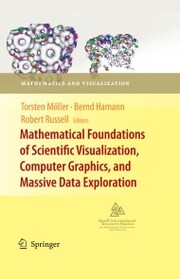Detailansicht
Mathematical Foundations of Scientific Visualization, Computer Graphics, and Massive Data Exploration
eBook - Mathematics and Visualization
ISBN/EAN: 9783540499268
Umbreit-Nr.: 1684083
Sprache:
Englisch
Umfang: 350 S., 11.57 MB
Format in cm:
Einband:
Keine Angabe
Erschienen am 12.06.2009
Auflage: 1/2009
E-Book
Format: PDF
DRM: Digitales Wasserzeichen
- Zusatztext
- The goal of visualization is the accurate, interactive, and intuitive presentation of data. Complex numerical simulations, high-resolution imaging devices and incre- ingly common environment-embedded sensors are the primary generators of m- sive data sets. Being able to derive scienti?c insight from data increasingly depends on having mathematical and perceptual models to provide the necessary foundation for effective data analysis and comprehension. The peer-reviewed state-of-the-art research papers included in this book focus on continuous data models, such as is common in medical imaging or computational modeling. From the viewpoint of a visualization scientist, we typically collaborate with an application scientist or engineer who needs to visually explore or study an object which is given by a set of sample points, which originally may or may not have been connected by a mesh. At some point, one generally employs low-order piecewise polynomial approximationsof an object, using one or several dependent functions. In order to have an understanding of a higher-dimensional geometrical object or function, ef?cient algorithms supporting real-time analysis and manipulation (- tation, zooming) are needed. Often, the data represents 3D or even time-varying 3D phenomena (such as medical data), and the access to different layers (slices) and structures (the underlying topology) comprising such data is needed.
- Kurztext
- <P>Here is a summary of cutting-edge research ideas on visualization presented at a key workshop in Banff, Canada, where new algorithms were discussed based on sophisticated modeling techniques that permit the extraction of high-level topological structures.</P>
